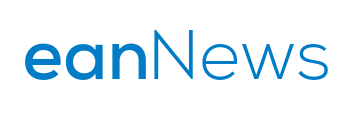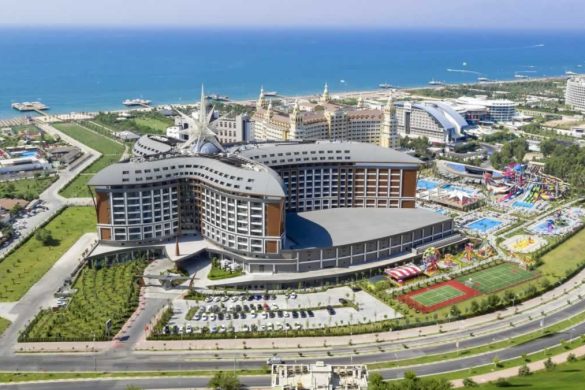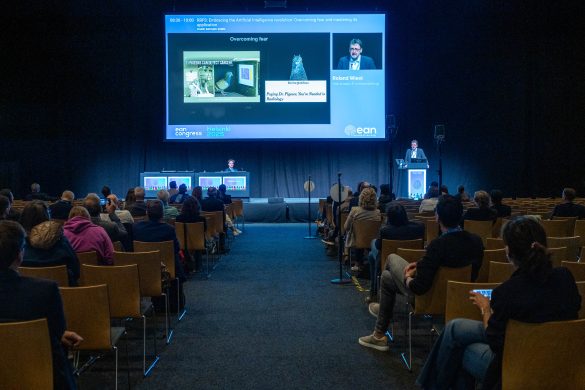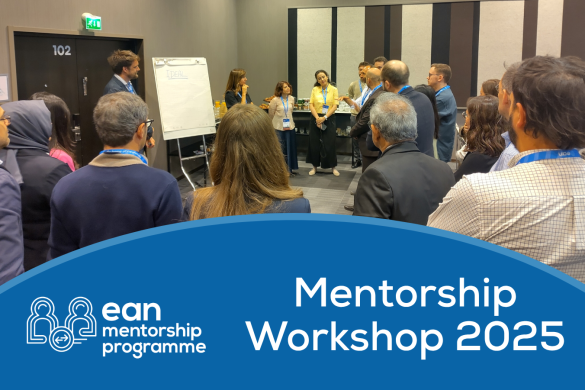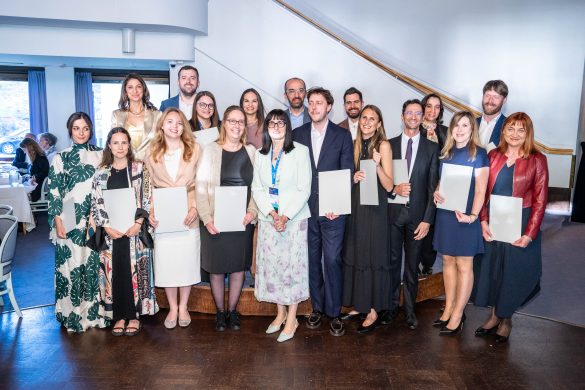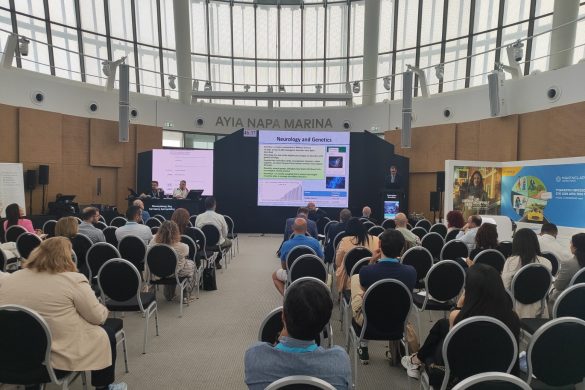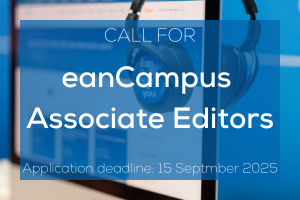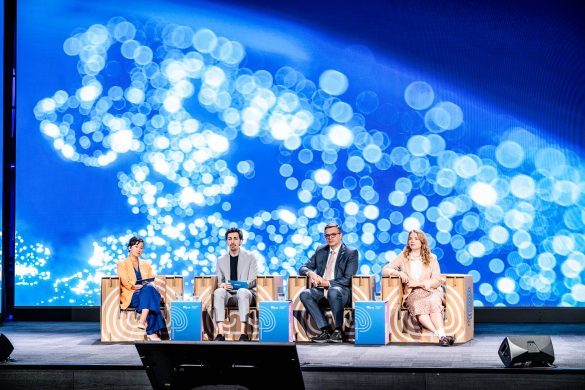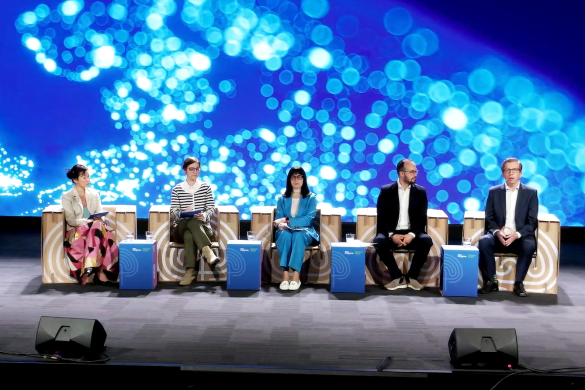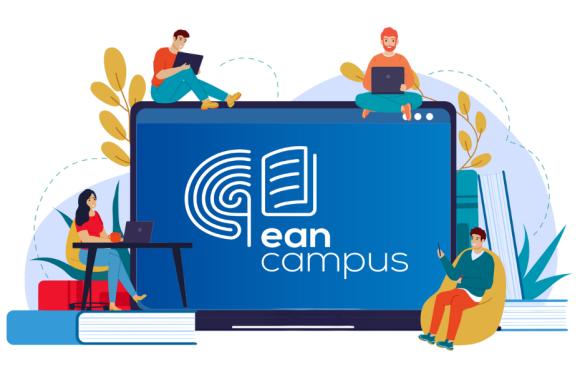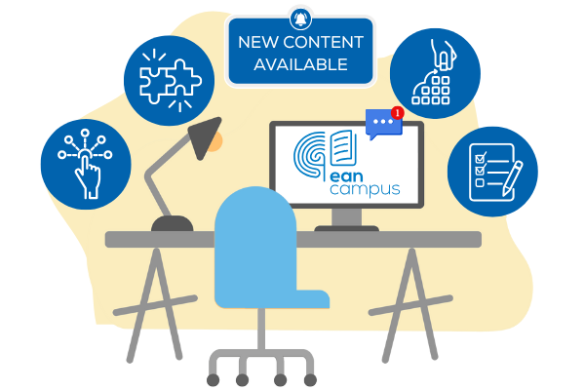Below are three reports from those who took part in the EAN clinical Fellowships in 2019. Keep visiting EANpages over the next months to read more reports from other particpants from 2019.
Want to take part in an EAN Clincial Fellowship? The deadline for applications for 2020 is October 31, 2019, so be sure to apply soon.
You can find further details on the Clinical Fellowship page on the EAN website.
Report 1:
Fellowship recipient: Catarina Falcão de Campos, Lisbon, Portugal
Duration of Fellowship: 10th January until 30th June 2019
Hosting Department: Hôpital Pitié Salpêtrière, Paris, France
During my clinical fellowship at Institut de Myologie, Hôpital Pitié Salpêtrière at Paris, France I had the opportunity to train in the clinical approach to neuromuscular disorders. My main aims were the following:
- Improve my clinical skills in the evaluation of a patient with a suspected neuromuscular disorders, including differential diagnosis
- Perform different neurophysiological studies in the context of diagnostic approach in a patient with a suspicion of neuromuscular disorders
- Learn to analyse and interpret muscle biopsies
- Collaborate in different scientific projects.
During this period, I attended in the outpatient clinic, where I had the opportunity to see a large diversity of patients with neuromuscular disorders, including genetic and acquired neuropathies, diseases of the neuromuscular junction, acquired and genetic myopathies and muscle channelopathies. I also actively participated in the examination and discussion of patients admitted to one-day hospitalisation, where patients were examined in detail by a neurologist and submitted to different work-up tests such as EMG, muscle MRI, muscle biopsy, respiratory function evaluation and cardiac evaluation. At the same time, I performed, under supervision, different neurophysiological studies namely conduction velocities study, needle EMG, repetitive nerve stimulation in order to assess neuromuscular junction function and short and long exercise tests to study muscle channelopathies. I also had the opportunity to read some muscle biopsies in optic microscope and participate in weekly multidisciplinary discussions on patients who had muscle biopsy. Lastly, I had the opportunity to collaborate in two different projects: study of a cohort of patients with MYH7-related myopathy and description of two families with hereditary sensory autonomic neuropathies.
In conclusion, I consider that my six-month fellowship at Institut de Myologie was critical to improve my skills in the clinical approach of a patient with a neuromuscular disorder. It was a great experience to work with a multidisciplinary team with highly experienced colleagues. I believe that my experience will help me to contribute to better care of patients with neuromuscular disorders.
Report 2:
Fellowship recipient: Kamila Shamtieva, Moscow, Russian Federation
Duration of Fellowship: 19.08.19 – 03.10.19
Hosting Department: Roger Salengro Hospital, Lille, France
I want to express my gratitude to the European Academy of Neurology for the opportunity to study in France. I am glad that I went through clinical fellowship in Roger Salengro Hospital in Lille, the largest thrombectomy center in France.
I saw the really significant difference compared to my country, where the doctors strictly follow the classical standards, including dual therapy, consisting of thrombolysis and thrombectomy. In Europe neurologists have already started practising completely new approaches, such as assessing the mismatch between diffusion-weighted MRI and FLAIR or using thrombectomy without thrombolysis for patients with large deep ischaemic stroke. So, now we can do thrombolysis outside the 4.5-hour window. I was able to see how clinical trials on this problem, such as SWIFT, are being conducted, which should become the basis for recommendations on the use of these different types of therapies in the future.
The patients also significantly differ from ours. I had never before seen patients with thrombosis of venous sinuses due to sickle cell anaemia, haemorrhage due to dissection at the age of 72 years, post-radiation arteriopathy and patients with transient global amnesia. Surprisingly, despite the older age of the patients, they have practically no signs of small vessel disease, while in Russia most people over 50 years of age already have Fazekas 1, and we have a lot of young patients under 50 years of age with severe stage of cerebral microangiopathy. It was extremely amazing for me to see people aged 80-90 years old with the first lacunar stroke or microbleed, this makes me seriously think about the peculiarities of the genetic prerequisites for cerebrovascular pathology and how they may vary between countries.
I am very glad that my supervisor in Lille was Prof. Didier Leys, who has enormous knowledge in neurology, which he willingly shared in communication with me. Moreover, he exemplifies his every statement, referring to certain studies and articles. Conversations with him greatly enriched my own knowledge.
He also arranged with Dr. Thibaud Lebouvier my attendance at his outpatient practice at the memory centre once a week, which was a great opportunity for me. Dr. Lebouvier has vast knowledge in the field of cognitive decline, dementia and research on the effectiveness of various drugs. I saw so many patients with Lewy body dementia, corticobasal degeneration and frontotemporal dementia during these visits. Dr. Thibaud Lebouvier introduced me to many studies and outlined the volume of articles necessary to get acquainted with, for which I am very grateful to him. The approach to the argumentation of his diagnoses and treatment prescribed by him, made me think that perhaps this is the problem which I would like to deal with in my future clinical work in Moscow.
In the stroke unit I was given the opportunity to be on the duty with Barbara Casolla, Marco Pasi, Marie Bodenant, who explained the most difficult issues to me in English. That was a very important part of my clinical fellowship. I saw how the emergency department for stroke patients is organised, which I am sure will certainly help me in my work as a duty neurologist.
In my free time, I also visited the neurophysiology office to see the process of electroneuromyography. Fortunately, they had the same device for electroneuromyography as the one in our centre. Again, despite the similarity in the basic principles, there are significant differences. I saw some types of examination which I had not met before. The differences in needle electroneuromyography are very striking, because the doctors I worked alongside evaluated only the interference pattern and spontaneous activity, while throughout our country and neighbouring countries it is customary to collect motor units.
It is very interesting that the technical part of electroneuromyography in university clinics is carried out by nurses. And in the stroke unit, the nursing staff themselves assess The Glasgow Coma Scale and the National Institutes of Health Stroke Scale, participate in visiting patients with doctors and view neuroimaging data. This is of great help to doctors, simplifies the work and improves its quality.
It was very important for me to communicate with residents and it was interesting to compare the level of their knowledge with ours which we receive during the residency. It was also curious to listen to how their process of education goes. It was also interesting to communicate with PhD students, especially with other foreign students, who were also going though clinical fellowships in this department. From them I learnt for myself some points on data processing using programs for making charts and approaches to publishing articles in international journals. I am sure that it will be extremely useful to me in the future.
Of course, It is quite difficult to study in a country with another language. Even though I studied French at school and, after receiving a grant, I also begun to study it with a tutor, my knowledge was enough only to understand the main points in communicating with patients. At the same time, this average knowledge of French did not inhibit my learning. Towards the end of the fellowship there was no doubt that my understanding of patients had improved. It had also become much easier to understand how the clinic operated, and when and where I needed to go in order to see more.
Probably with hindsight, I would have taken a longer period, perhaps three months, which could have contributed to even more effective assimilation of information. Nonetheless, for the two incomplete months that I spent in the Roger Salengro Hospital, I learnt an enormous amount of information that I should go over by myself upon my returning home.
Regarding my staying in Lille, it was initially quite difficult to settle due to the many different day-to-day things, for example how buses run, which travel card is better to buy. However, in general, after two months, it does not seem so complicated to me now.
I managed to rent a small studio apartment an hour away from the hospital, which might have been a bit far, but it didn’t cause any problems. The studio cost me about 1,000 euros for less than two months, public transport expenses seemed very expensive, and food cost about twice as much as in my country. In general, in addition to the grant itself, I spent about the same amount on my living in Lille, but it seemed to me that it was not as expensive as it could have been.
I am very pleased with the chosen location, because Lille is situated on the border with Belgium and not far from Holland, so during the weekend I had an opportunity to visit other cities and countries, which also enriched my life experience.
Once more I would like to express my deep appreciation to the European Academy of Neurology, Prof. Franz Fazekas and Magda Dohnalova, who give this opportunity to young neurologists, also Prof. Charlotte Cordonnier and Prof. Didier Leys, who agreed to take responsibility for me, for this amazing experience that I have received. I will try to use all the knowledge gained during this fellowship and I am certainly going to share everything I saw and heard with my colleagues.
Report 3:
Fellowship recipient: Vincent Van Iseghem, Sint-Andries, Belgium
Duration of Fellowship: 7.1 – 15.1.2019 and 21.1 – 22.2.2019
Hosting Department: APHP Pitié-Salpétrière, Paris, France
I carried out my clinical fellowship at the Paris Pitié-Salpétrière hospital, facilitated by the EAN clinical fellowship grant for six weeks.
During my stay I completed further training in the field of movement disorders under the guidance of Prof. Marie Vidailhet. A warm welcome and introduction to all different activities was personally handled by Prof. Vidailhet after which the whole movement disorders staff was informed about my presence. We agreed to three principal goals; training in movement disorders electrophysiology (for which I was introduced to Prof. Emanuelle Apartis in the neighbouring Saint-Antoine hospital), training in deep brain stimulator (DBS) programming and general training in movement disorder consultations.
Depending from week to week, on average I spent one- or two- half days in electrophysiology training, three- to four- half days in consultation, one- to two- half days in grand rounds and one- to two- half days in self-study. Every Tuesday at noon there was a movement disorders gathering, presented by one of the movement disorders specialists in which clinical cases or topics were discussed. Every Thursday at noon there was a general neurology gathering, presented by different neurology clinics (epilepsy, neuromuscular diseases, neuro-oncology, neurovascular etc.).
Evaluating my time, I believe that I reached the set goals.
- I have made enormous progress in the field of movement disorders electrophysiology thanks to the guidance of Prof. Apartis, expert in this field. In particular, this is something I would like to implement in my hospital in the future, as we don’t have or use this particular kind of expertise in Flanders.
- Next to that, having the possibility of being present in the consultations by experienced movement disorders specialists, observing and learning directly from them, will be always be a precious memory. My appreciation of French neurology and their particular way of semiologically evaluating patients has only grown.
- In the field of DBS, I was able to practise and witness several useful programming and problem-solving strategies.
- I saw and learned about some very interesting and rare movement disorder cases.
More unexpectedly, but just as valuable, I have learned about:
- functional movement disorders and implementing several treatment strategies; communication about the disorder, positive diagnosis by electrophysiological examination, transcranial magnetic stimulation (TMS) and alternative treatment options such as hypnosis.
- Dance therapy for Parkinson’s disease. I’ve been present in several dance sessions and got to talk with patients and organisers, who both were very enthusiastic about its positive impact.
- Echography as a tool in botulinum toxin therapy
- Organisation of a movement disorders unit and – as asked by Prof. Vidailhet – evaluating the movement disorders unit.
- Neurology in different European countries. I got to know several other fellows from Ireland, Switzerland, Portugal, Spain, Brazil and Italy. We shared common experiences but also discussed the differences in healthcare systems, training as a resident, epidemiology of neurological diseases etc.
- Being away from the comfort zone of my hospital and home was a humbling experience.
In my final evaluation, I can only express my satisfaction with this clinical fellowship experience, which has enriched my view on neurology, movement disorders and my personal functioning. Thinking about any negative points is hard as I’ve been welcomed appropriately and was educated so generously in all the above-mentioned aspects. The only remark I had – the freedom – I had to choose my own programme and the assignment of very few specific tasks. This makes you sometimes feel dispensable, but on the other hand it makes you think more about what you really want yourself to learn and to do. So, I feel it had a positive side as well.
To conclude, I would like to thank Prof. Marie Vidailhet for her enthusiastic guidance and interest in me, her entire movement disorders group who are all inspiring personalities, my head of department Prof. Paul Boon for giving me this opportunity and EAN for the clinical fellowship grant.
